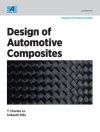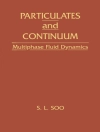Contact mechanics has its application in many engineering problems. No one can walk without frictional contact, and no car would move for the same r- son. Hence contact mechanics has, from an engineering point of view, a long history, beginning in ancient Egypt with the movement of large stone blocks, over ?rst experimental contributions from leading scientists like Leonardo da Vinci and Coulomb, to today’s computational methods. In the past c- tact conditions were often modelled in engineering analysis by more simple boundary conditions since analytical solutions were not present for real world applications. In such cases, one investigated contact as a local problem using the stress and strain ?elds stemming from the analysis which was performed for the entire structure. With the rapidly increasing power of moderncomp- ers, more and more numerical simulations in engineering can include contact constraints directly, which make the problems nonlinear. This book is an account of the modern theory of nonlinear continuum mechanics and its application to contact problems, as well as of modern s- ulation techniques for contact problems using the ?nite element method. The latter includes a variety of discretization techniques for small and large def- mation contact. Algorithms play another prominent role whenrobustand- cient techniques have to be designed for contact simulations. Finally, adaptive methods based on error controlled ?nite element analysis and mesh adaption techniques are of great interest for the reliable numerical solution of contact problems.
Table des matières
to Contact Mechanics.- Continuum Solid Mechanics and Weak Forms.- Contact Kinematics.- Constitutive Equations for Contact Interfaces.- Contact Boundary Value Problem and Weak Form.- Discretization of the Continuum.- Discretization, Small Deformation Contact.- Discretization, Large Deformation Contact.- Solution Algorithms.- Thermo-mechanical Contact.- Beam Contact.- Computation of Critical Points with Contact Constraints.- Adaptive Finite Element Methods for Contact Problems.
A propos de l’auteur
Peter Wriggers is the internationally most rocognised German scientist in the field of computer-based structural mechanics.












